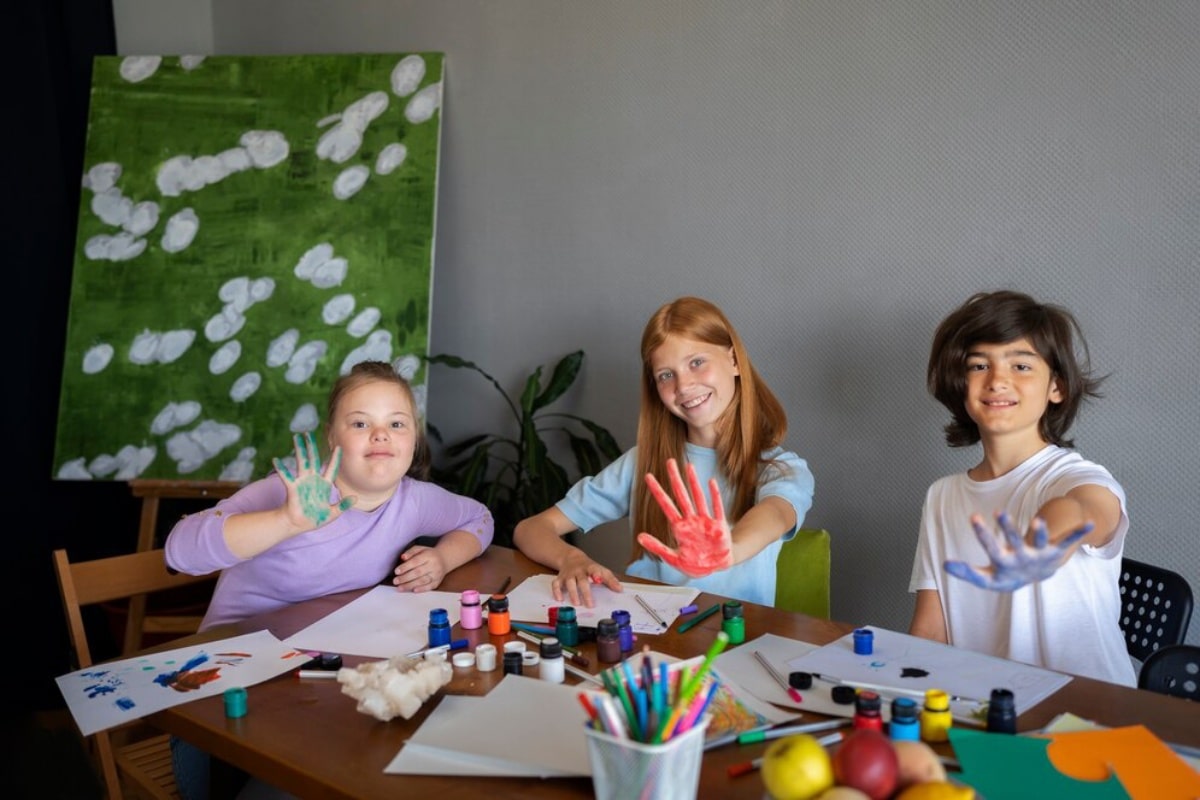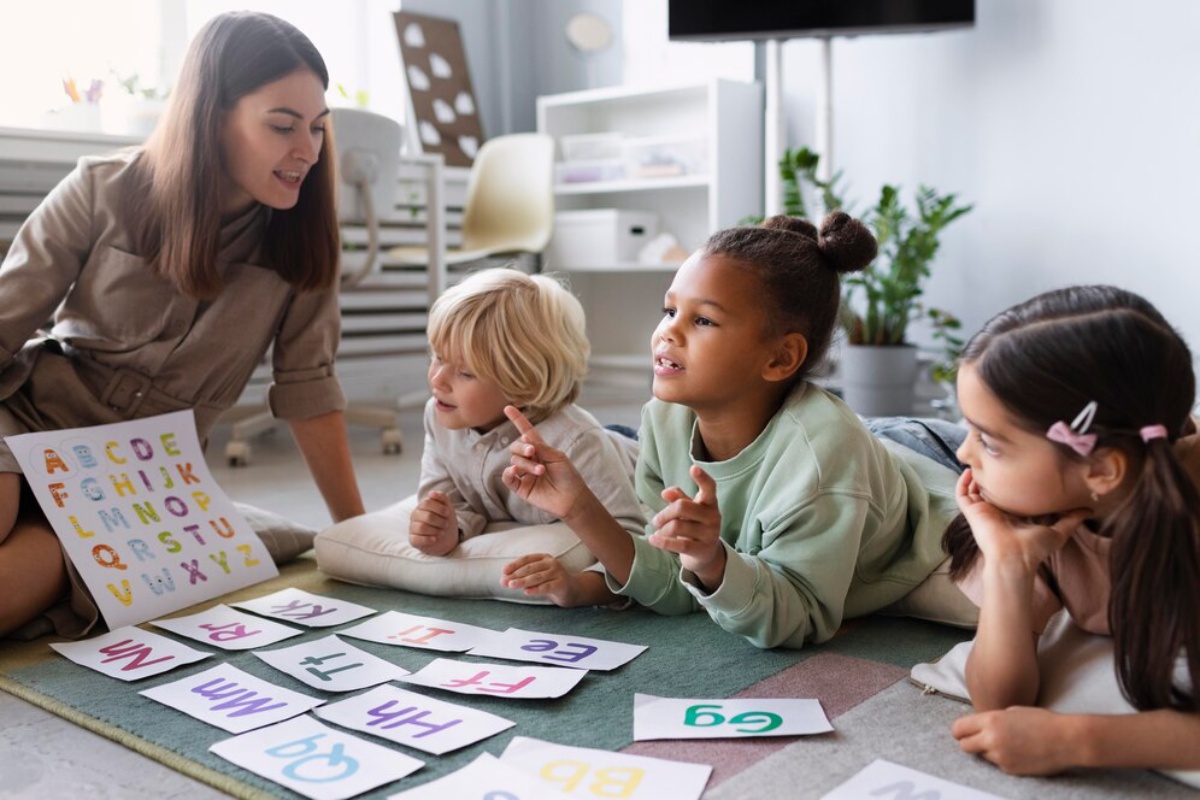
Making Learning Fun at Home with Creative Activities
In a world full of digital distractions, home education is a strong way to support curious minds. Structured schooling doesn’t meet every child’s needs, so many choose to learn at home. How can parents keep kids engaged without turning the living room into a classroom? The secret lies in making learning fun. Parents can make learning joyful and lasting. They can use creative activities and turn everyday moments into teachable opportunities.
Adding fun learning activities to your daily routine can boost your child’s education. This is true whether you homeschool full-time or just add to their learning. This guide shows how to make learning fun for kids at home. We’ll focus on hands-on, playful, and meaningful activities.
Why Fun Matters in Home Education
Learning Sticks When It’s Enjoyable
Children absorb more when they’re having fun. Laughter, movement, and sensory experiences engage various brain areas. This helps reinforce memory and makes information stick. When kids enjoy learning, they explore ideas more. This helps them remember what they’ve learned.
Boosts Motivation and Confidence

Fun learning builds confidence. Children form a strong bond with learning when they solve puzzles, create DIY crafts, or try out science experiments. They enjoy seeing results and getting messy. This motivates them to try new things and fuels a growth mindset.
Turning Your Home into a Creative Learning Lab
To promote learning, you don’t need a classroom setup or expensive tools. Your home is already full of resources. With some creativity and planning, you can build a rich environment. Use what you already have.
Use Everyday Items as Teaching Tools
- Kitchen: Great for math and science lessons. Measuring ingredients teaches fractions; baking becomes a chemistry experiment.
- Living Room: Host a mini spelling bee, read-aloud sessions, or geography trivia night.
- Backyard: Perfect for nature scavenger hunts, garden-based science, or creative storytelling outdoors.
Creative Learning Activities by Subject
1. Language and Literacy
- Story Cubes: Create dice with pictures or words and let your child roll to invent stories.
- Book-based Crafts: Read a book. Then, create a themed craft. For example, build a castle after learning about knights. Or, draw scenes from the story.
- Journaling Prompts: Help kids write short stories or daily journals. Use funny or creative prompts to spark their imagination.
2. Math Games and Challenges

- Treasure Hunts with Clues: Each clue can include a math problem to solve before reaching the next.
- Lego Math: Use Legos to teach addition, subtraction, and even geometry.
- Storefront Roleplay: Create a “shop” where kids can use play money to practice adding and subtracting.
3. Science Exploration
- Sink or Float Experiments: Use everyday household items. Guess what will happen. Turn your bathtub into a fun science lab!
- DIY Volcanoes: Mix baking soda and vinegar in a built “mountain” to see chemical reactions.
- Weather Charting: Make a weekly weather journal with drawings, temperature, and cloud observations.
4. Social Studies and Geography
- Cultural Cooking Nights: Choose a country. Cook a traditional meal together. Learn about its history and customs.
- Map Making: Have your child draw maps of the house, neighbourhood, or imaginary lands.
- Pen Pals or Video Chats: Reach out to friends or family in other areas to discuss culture, weather, or customs.
5. Arts and Crafts
- Nature Art Projects: Create fun pieces using leaves, flowers, and stones. Learn about nature as you craft!
- Upcycled Creations: Turn recyclables into art, teaching both creativity and sustainability.
- Music and Movement: Try using household items as instruments. You can also play movement games, like freeze dance.
How to Keep Learning Engaging Every Day
Rotate Activities Regularly
Children thrive on novelty. Introducing new games, crafts, or subjects every few days keeps interest levels high. It’s not just about doing something new every hour. It’s about staying curious and enjoying the variety.
Follow Their Interests
If your child is interested in dinosaurs, space, or animals, design lessons based on those topics. Interest-based learning leads to deeper engagement and better knowledge retention.
Incorporate Technology Thoughtfully
Educational apps, documentaries, and virtual museum tours can be helpful tools. However, they should be used to enhance learning, not to replace hands-on experiences.
Time-Saving Tips for Busy Parents
You don’t have to be a full-time educator to prioritise learning at home.
- Plan Weekly Themes: Dedicate each week to a theme (like nature, food, or famous inventors). This helps streamline prep and keeps activities cohesive.
- Prep Kits Ahead: Create easy “activity kits” with supplies for the week. Having ready-to-go materials saves time and sparks creativity.
- Use Visual Schedules: A simple chart or calendar can show daily activities. This helps kids stay focused and reduces decision fatigue.
The Role of Play in Learning

Never underestimate the power of play in home education. Unstructured play, imaginative games, and roughhousing help kids grow. They boost cognitive, social, and emotional skills. Through play, kids learn to problem-solve, collaborate, communicate, and cope.
Examples of Play-Based Learning:
- Building forts enhances spatial reasoning.
- Pretend shops encourage math, literacy, and negotiation.
- Board games develop critical thinking and emotional regulation.
Encouraging a Love for Lifelong Learning
The goal of home education goes beyond academics. It’s about sparking curiosity and fostering a lifelong love of learning. Children become confident When they link learning to joy, exploration, and connection. They feel ready to discover and adapt.
- Celebrate effort over perfection: Praise curiosity and problem-solving, not just correct answers.
- Be a co-learner: Discover subjects together. Show excitement about learning!
- Create a judgment-free space. Allow mistakes, questions, and surprises—they are all part of the process.
Conclusion: Making Learning Fun at Home with Creative Activities
Home education doesn’t have to mean strict schedules and formal lessons. Everyday spaces can turn into fun learning spots with a bit of creativity. Parents can make learning fun with hands-on activities. This way, education feels like an adventure instead of a chore.
Follow your child’s lead to manage homeschool full-time or enhance your evenings. Stay flexible and value their curiosity. After all, when kids are having fun, learning naturally follows.